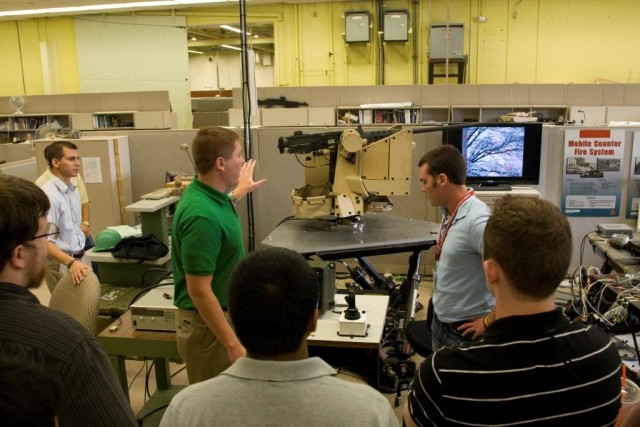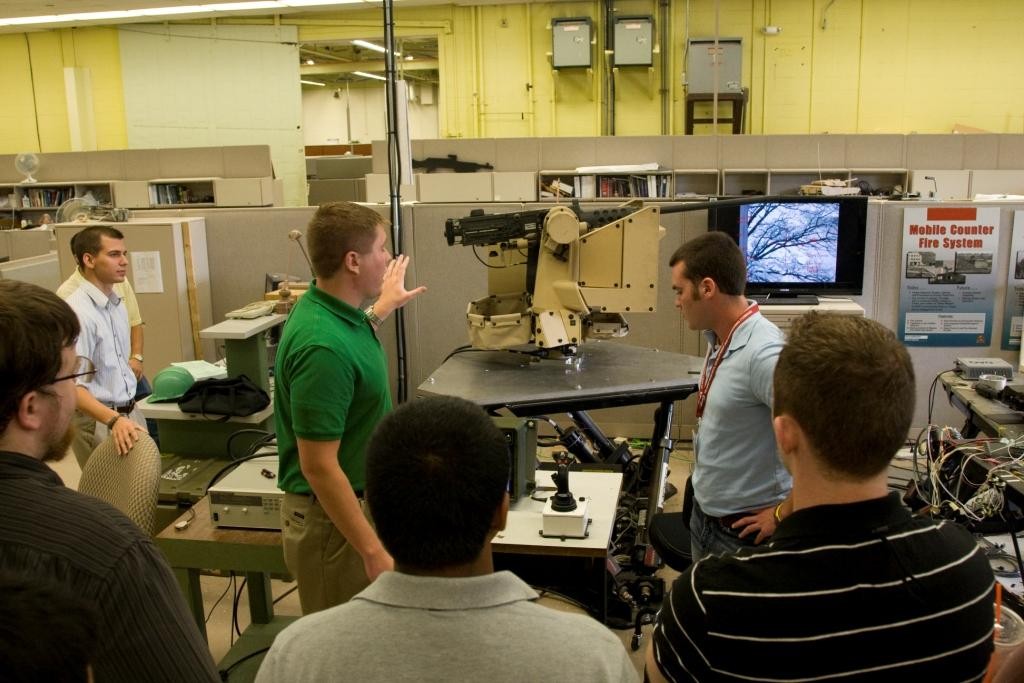As the Picatinny summer hires continue to wander around various buildings, perhaps they will now have more than an inkling as to how the arsenal is organized.
On July 13, 82 summer interns were taken on a tour of the installation. They were briefed on many activities at Picatinny and how the multitude of engineers and other professions make Picatinny function.
The facility tour was organized through the Executive Fellows office under the director of the Armament Research, Development and Engineering Center (ARDEC).
The purpose of the orientation day was "to familiarize the summer hires with the organic capabilities at ARDEC," said a member of the fellows office.
The tour included an overview of ARDEC by acting Deputy Director Henry Rand, who explained the hierarchy of command, detailing how ARDEC fits into the overall structure of the Army and the customers that are served.
Within the context of each subject, Rand conveyed the underlying mission of Picatinny: to help the warfighter.
"Everyday, we're making sure we provide essential support to the Soldier on the battlefield." he said.
Additionally, he mentioned that the average age of a Picatinny employee is 42. There has been a strong emphasis on recruiting younger employees.
Although the tour was for general orientation, the tour was also structured to give summer hires insight into the opportunities available at Picatinny.
The tour included the Prototype Integration Facility, including the Prototype Hardware Fabrication. The visit to the facility, which manufactures a number of equipment and parts for the Army, helped the interns understand how many Army supplies are made.
The hires also viewed manufacturing machines like the CVD STRIPPIT, which uses lasers to make alterations to material, as well as the TrumaBend V130, which bends sheet metal.
Along with witnessing the manufacturing process, the interns also got to see some finished products, such as ammo boxes, charging handles, and electrical boxes.
Interns also traveled to the Target Behavioral Response Laboratory (TBRL). Amy Rowland, a summer hire with Project Manager Soldier Weapons, cited the TBRL as her favorite stop on the tour. "It was interesting; it was a lot of fun," she said.
The TBRL, as the interns would soon learn, creates scenarios designed to test Soldiers. Lab employees design experiments to further understand human reaction to different circumstances.
Kevin Tevis, an ARDEC employee who works with Quality Engineering and System Assurance, described many research experiments.
On experiment seeks to determine whether brute force, stunning light, or loud noises best deter people from throwing rocks at vehicles.
Next was the Remote Weapons Branch. The group was briefed on the Commonly Remotely Operated Weapon Station (CROWS), along with the work under way to improve the program.
The interns were allowed to operate the CROWS to mimic a Soldier's use of it.
Carissa Alza, an intern for Art Fire Control, said, "I thought it was really informative. I sort of knew Picatinny. My Dad works here, but it was great to see everything".


Social Sharing